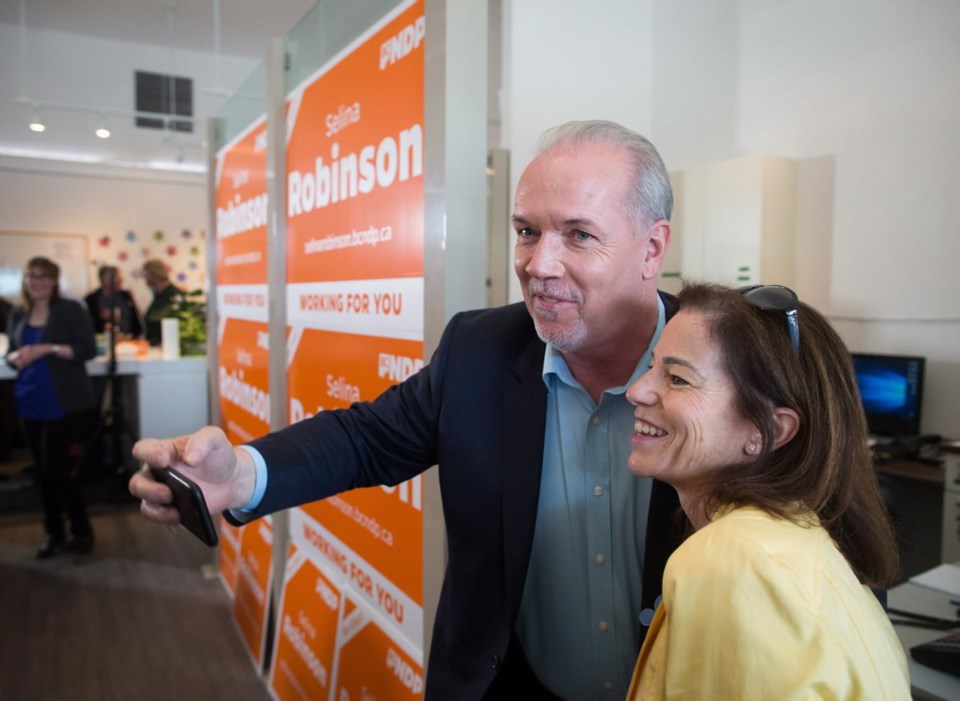 The culmination of three years of agitation for a serious look at regional amalgamation will be unveiled soon, says Municipal Affairs Minister Selina Robinson.
The culmination of three years of agitation for a serious look at regional amalgamation will be unveiled soon, says Municipal Affairs Minister Selina Robinson.
Remain calm. No need to brace for any drama. The campaign for change met the force of inertia, and inertia looks to be prevailing.
The report is likely to be a comprehensive look at the vague concept of integrating services, which represents the mushy middle ground between doing nothing and seriously pursuing the idea of rationalizing Greater Victoria’s fractured civic landscape. The status quo was in control of this issue from the outset, so the status quo will pretty much prevail.
Release of a study that gingerly examines the idea of integrating services will confirm how hard it is to overcome Greater Victoria’s all-but-official civic motto: “We like it better the old way.”
The die was cast prior to municipal voting day in 2014. The amalgamation campaign had succeeded in convincing authorities to canvass the public mood in a non-binding way. But that was the high-water mark for the radicals. The jurisdictions agreed to do so, then did what they do best, ride off in all different directions. Eight municipalities put nine completely different questions on the ballots.
Do you want a cost-benefit analysis? Do you want to explore options to achieve efficiencies? Do you want to reduce the number of municipalities? Do you want Langford/Oak Bay amalgamated into larger municipalities?
There was general interest in change overall, but the questions were torqued in so many different ways that it bled some of the momentum out of the amalgamation movement.
The issue was booted up to the provincial level, where two previous ministers responsible decided to slow-play it. It took almost two years — until June 2016 — to commission a study, and months more to do it. It’s now 14 months past the original date it was supposed to be put to cabinet.
The 13 separate local governments haven’t rejected amalgamation. They’ve just let time take its course, helped along by sizable blocs in each jurisdiction who are wary about ceding power. The ministers didn’t want the headaches that come with advocating major change, so the referendum interest looks to have been adroitly deflected into some fine-tuning of co-operation agreements.
The current civic scene is the logical product of years of institutionalized parochialism that focused on smaller and smaller interests. The fact it reached the point of absurdity years ago is irrelevant. The bigger point is that it’s what people seem to want.
The brief history is that Victoria incorporated in 1862 and spurned Saanich and Oak Bay residents to the point where they decided to go their own respective ways in 1906. That drove Esquimalt to create its own government six years later.
The history of all the Saaniches is a long story, but it can be summed up by these directions from Saanich to North Saanich: “Take Saanich Road to Quadra, then West Saanich Road to Old West Saanich Road, back on West Saanich Road, right on Keating Cross Road, then Central Saanich Road, to Saanich Cross Road, back to Central Saanich Road, over to East Saanich Road, around the airport and back on West Saanich Road to Land’s End.” (Which is where they ran out of variations on the name Saanich.)
On the West Shore, Colwood and Metchosin decided to go their own ways in the mid-1980s, View Royal did the same a few years later, Langford followed suit in 1992, prompting the Highlands to do the same a year later. Sooke, the baby of this dysfunctional family, struck off on its own in 1999.
NDP MLAs were noncommittal throughout the past few years on the topic. Since they gained power, the new government has expressed zero interest. When Robinson releases the report, it won’t be with a view to launching a bold new venture. It will be in the style of sweeping some old business off her desk that even the previous government wasn’t much interested in pursuing.
Just So You Know: Greater Victoria will likely carry on with 91 elected local officials, 39 more than New York City. The capital region has four more local elected officials than B.C. has MLAs. That’s the way it is, and that’s the way we apparently like it.



